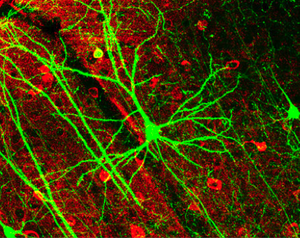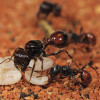Scientists have found the neurological equivalent of the water that keeps a cut flower alive.
For many years it's been known that cutting a nerve causes the sectioned part of the cell to die, a process called Wallerian degeneration. But this demise takes more time the  further from the nerve ending that the cut is made, although no one knew why.
further from the nerve ending that the cut is made, although no one knew why.
Now scientists have discovered that a protein called Nmnat2 is key to keeping nerve endings intact.
Writing in PloS Biology, researchers Jonathan Gilley and Michael Coleman from the Babraham Institute in Cambridge discovered that switching off the gene encoding the protein, or blocking its production, causes nerve connections to wither, similar to the way a plant droops when its stem is cut. Conversely, boosting levels of the gene mean that cut nerves can survive for much longer.
The key to the breakthrough came from a mutant gene called WldS. Nerve cells of rats, or even flies, carrying this gene degenerate much more slowly than normal when they are injured. When the sequence of the WldS gene was studied it was found to consist of two genes stuck together, one of which was closely related to Nmnat2.
This led the researchers to study how Nmnat2 and its genetic relatives are produced and distributed within neurones. Ultimately, they found that only the Nmnat2 protein is transported along axons after being made in the nerve cell body, and this is how it keeps distal nerve fibres alive.
At the moment though the researchers don't know how Nmnat2 produces these effects or how it plays this role in axon viability. But its actions mean that it might be an important therapeutic target useful for the treatment of neurodegenerative diseases like Alzheimer's, Parkinson's and even glaucoma.










Comments
Add a comment